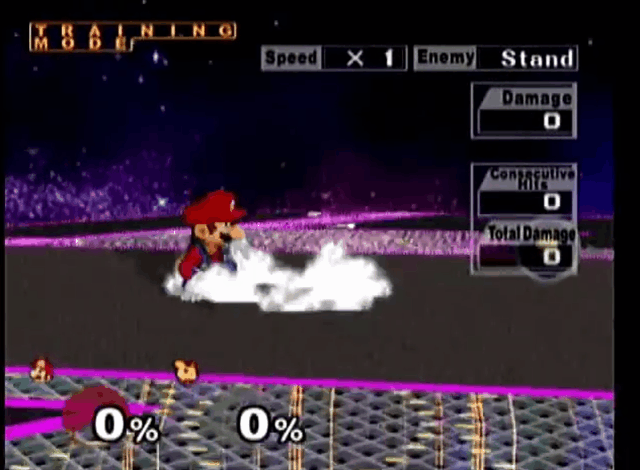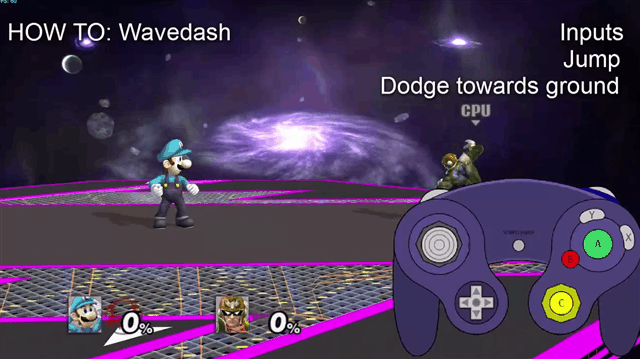Here’s a new trick for those of you that never learned how to do the famous technique in Melee: a GIF that clearly shows the inputs necessary to perform a “wavedash”.
Wavedashing, as you might know, is when someone performs a sliding motion while still being capable of doing ground attacks available to you while standing still. It’s a famous advanced technique which can often be spotted at high-level play.
The GIF comes from Redditor Lex_slayerpride, who also provides a text-based explanation of the technique:
Inputs needed
While in the air, air dodge at an angle towards the stage.
About this move
Wavedash is a technique that is performed by air dodging diagonally into the ground, causing the character to slide a short distance. It allows players to perform any ground action while moving horizontally on the ground.
Contrary to popular belief, wavedashing is not strictly a glitch; it is more accurately a corner case of Melee’s physics engine. When air dodging diagonally to the ground, all of the momentum of the airdodge is transferred into horizontal (ground) movement, since the character can no longer fall. Additionally, performing a wavedash causes the game to recognise the character as landing from the helpless state due to air dodges causing the state. Thus, the game is not recognising wavedashing as a specific “technique” (such as an attack or movement) but as if the character simply landed and stood still; the sliding effect is due to the “slipperiness” inherent in the game’s engine.
I would HIGHLY recommend anyone who has any question about wavedashing to read the wiki article here
Benefits and Purpose
While in a wavedash, the character is considered by the game to be standing – thus, they can perform any ground attacks that could normally be performed from a standing position, such as smashes, standing grabs and jabs. The character also retains all of their standing defensive maneuvers such as sidestepping and shielding. With this extra utility, wavedashing enables a moving versatility dashing can’t match.
Another advantage lies in the ability to wavedash backwards while facing forwards, which allows characters to perform standing attacks while moving both backwards and forwards. This is helpful for mindgames, especially with characters with longer wavedashes.
This technique also allows relatively safer retreats from opponents, and should the player fall off the stage with the wavedash, they will immediately grab onto the ledge, giving rise to a powerful and fast edgeguard option.
Starting out, you might find yourself performing wavedashes like at the start of the top GIF — where Luigi is jumping high, and then sliding across the ground. With practice, you acquire speed, allowing you to perform the move without leaving the ground — like so:

Picture: NothingWithNick
It’s also worth noting that the timing might vary depending on the character — again, it’s something that will require practice. Newer games also do not feature this technique, so don’t waste your time trying to do it in vanilla Brawl. (Edit: The move may be possible to do, if you happen to be using a mod for Brawl that allows for it.)
Happy wavedashing!

Comments
One response to “Throwback: How To Wavedash In Super Smash Bros.”
Urgh, for some reason I feel a glitch debate coming on. We’ve had a lot of them in Halo forums over the glitches in Halo 2 lately because of the coming MCC.